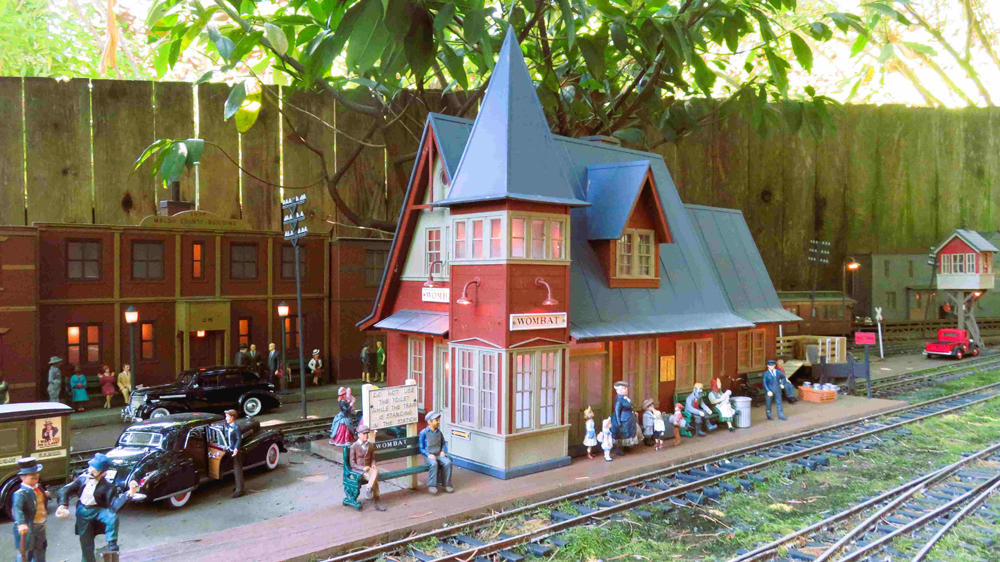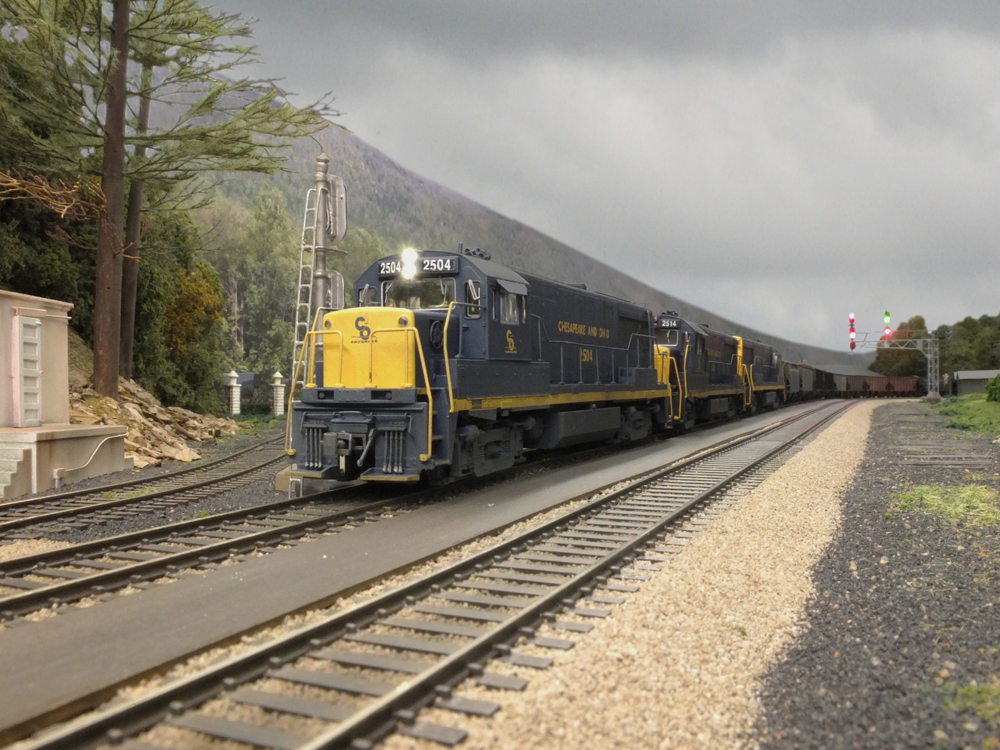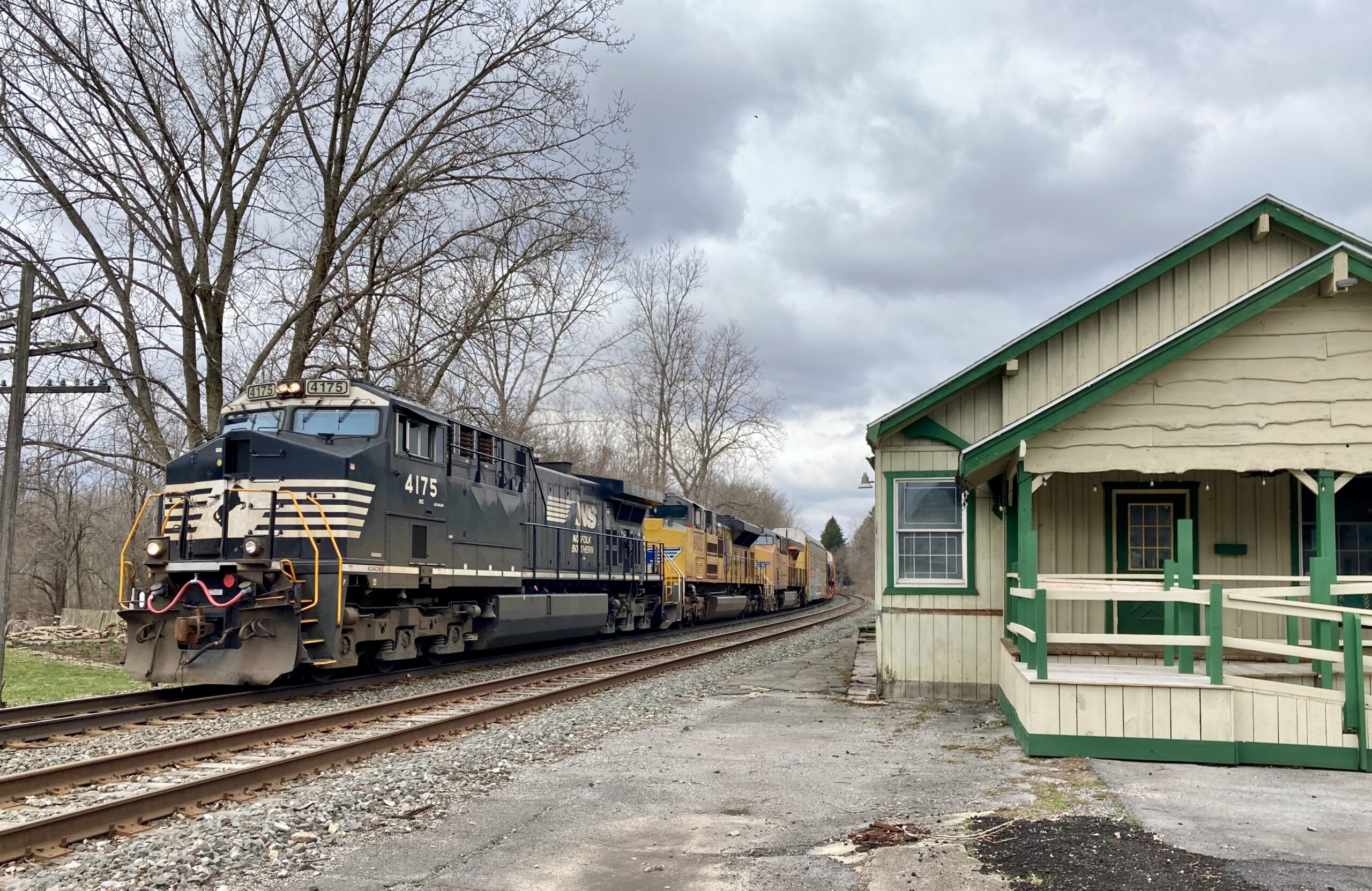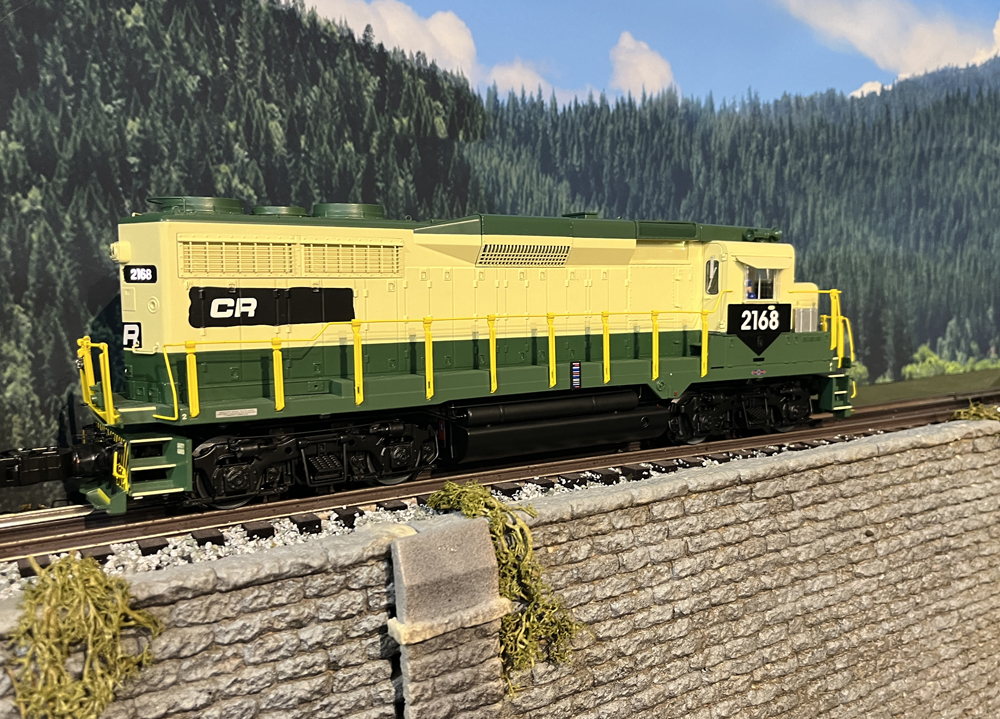The $250,000 allocated to the Legislature’s joint transportation committee would look at the former Northern Pacific route from Seattle over Stampede Pass, then south through the Yakima Valley and then northeast to Spokane, with service to such cities as Auburn, Cle Elu, Ellensburg, Yakima, Toppenish, and the Tri-Cities.
At present, Seattle and Spokane are connected by passenger rail via Amtrak’s Empire Builder over Stevens Pass.
The committee’s report, due in June 2020, will consider such issues as potential ridership, station stop locations, equipment needs, and operator options.
Getting a study going was a top priority for passenger-rail advocacy group All Aboard Washington, said the organization’s president, Harvey Bowen. The study will “add up all of the quantifiable benefits and see if it warrants the state’s investment,” he says. “I hope that it does.”
Bowen said a Seattle-Spokane rail service via the Yakima Valley could be structured like the Amtrak Cascades service in the Vancouver, B.C.-Eugene, Ore., corridor, with Amtrak as the operator and the state responsible for operating costs.
Also in the transportation budget:
■ A $671,000 appropriation for “continued analysis of the ultra-high-speed ground transportation corridor in a new study, with participation from Washington, Oregon, and British Columbia. The budget bill anticipates that money will come from private and local funding sources. Microsoft has helped finance research into ultra-high-speed ground transportation defined as a maximum testing speed of at least 250 miles per hour.
■ $1.5 million for a roadbed rehabilitation project for the Chelatchie Prairie Railroad, a 33-mile line owned by Clark County (Vancouver, Wash.). The roadbed improvement project will be focused on the first 14 miles of the line on which a short line, the Portland Vancouver Junction Railroad, operates.
■ $250,000 for a feasibility study of extending freight-rail service at the Port of Moses Lake.
In a separate legislative action, the state’s capital projects budget included a $5.6-million allocation for the Beverly Bridge, the Milwaukee Road span across the Columbia River. The bridge is one of the missing links in a cross-state trail following the Milwaukee Road right-of-way from the Idaho border to the Puget Sound region.














The statements regarding Madison to Milwaukee are not accurate. The service was never sold as high speed rail. However, it was to have significant segments of 110 mph running which is pretty fast. Literally for decades, that expansion was bipartisan. Unfortunately, Scott Walker used misinformation to attack it,
I hope they bid out the operation to other passenger train operators instead of just Amtrak.
Joseph Markfelder – Your comments are spot on. One of the (several and compelling) reasons why there is no train Milwaukee to Madison is that its proponents tried very hard to sell it as “high speed rail”. This was ridiculed. No way would it have been high speed or for that matter even an acceptable speed.
Thomas Scalf said, “With the evolution of BNSF, Stampede Pass became an alternative for excessive traffic over Stevens Pass and along the Columbia Gorge route. It isn’t used very much so adding a regional passenger service along this route would make sense.”
Actually Stampede Pass is quite heavily used. Six to twelve trains per day depending on the season, and heaviest when grain is moving. All the train are eastward unit empties trains – mostly grain, but sometimes crude and coal. Loaded/westward trains operate via Wishram.
Crews running over Stampede Pass are known as “Iron Triangle” crews. They’re home at Auburn, and for the first leg of their trip, they take an empties train to Pasco, tie up for rest, and then take a train to Vancouver, WA, tie up for rest, and then take a train north to somewhere like Centralia, Tacoma, Auburn, or Seattle (or anywhere on the line) before again being “home.” Auburn to Pasco is 228 miles, so that’s a fair distance on a route where there’s not a lot of fast running, and CTC only at siding locations (CTC islands; otherwise it’s TWC). Recently BNSF has been combining grain empties and running two together (about 14,000 feet) from Auburn to Hauser Yard, Idaho via Stampede Pass. None of the few sidings are long enough for such a train. The long crew district, lack of continuous CTC, and long freight trains will make this exceptionally challenging to re-establish passenger service.
Sounds great, but, getting Amtrak to budge on anything right now would be like pulling teeth out of King Kong without any anesthesia.
No doubt the study will reach the conclusion that the project is feasible (whether it is or not). This will be the long slow way to get to places that have excellent, reasonably priced air service from Seattle, and most of which have existing rail service.
And the High Speed Rail Corridor between Vancouver, BC and Portland is a non-starter due to the NIMBYs, BANANAs and CAVEs. Apparently Washington State hasn’t learned anything from the California High Speed Rail experience where even a liberal, Democratic governor had to realize it was a waste of money.
And $5.6 million to do a bridge for a hiking trail!?!?!
Joseph Markfelder,
I think you need to take your head out from under the rock it’s hiding and look at reality, people will pay what ever the market warrants for what ever service they so choose to use. I’m pretty sure that not all Acela Express passengers are business people, executives or big money types…there are probably just your every day average Joe as well…it’s not like a ticket costs a $1000 per seat.
Houston, the fourth largest city in the United States, should be the hub of commuter and regional intercity trains. Instead, it only has a tri-weekly passenger train, The Sunset Limited, and a concrete shanty for a train station that is smaller than those in theme parks. Houston’s freeways have been expanded to more than a block wide and still get traffic gridlock!
When Texas Central goes into operation, its trains will terminate six miles short of Downtown Houston. Now, imagine Amtrak’s Acela Express terminating at Back Bay Station instead of South Station in Boston.
Stampede Pass was the NP’s route and Snoqualmie was the Milwaukee Road’s. From 1971 to 1973, Amtrak operated a combined North Coast Hiawatha and Empire Builder over Stampede Pass, with a stop in East Auburn, near Tacoma. In 1973, Amtrak separated the trains, and the North Coast Hiawatha was routed onto the ex-GN Stevens Pass while the Empire Builder remained on Stampede Pass. For a couple of years after Amtrak discontinued the North Coast Hiawatha, the Empire Builder continued to go over Stampede Pass.
When there was talk of abandoning the Stampede Pass, Amtrak moved the Empire Builder to Stevens Pass. With the evolution of BNSF, Stampede Pass became an alternative for excessive traffic over Stevens Pass and along the Columbia Gorge route. It isn’t used very much so adding a regional passenger service along this route would make sense.
Just a correction, the town in Kittitas County is Cle Elum, not Cle Elu.
That’s great, I have flown over from FTL to YKM on a Helicopter a few times, That is a great State, and to me, thats a great idea. But Washington should opérate it. Why Amtrak? Nothing against Amtrak but sounds like a hookup on a contract to me. If not Amtrak then its a No Go? Smell like pork around here.On top of the fact the Amtrak caused a MAJOR accident on a “new” route a short time ago. How quick do politicians forget sh.. like that.
Not to sound too cynical, but if they can run a service between Seattle and Spokane without the safety issues of the Defiance Bypass debacle, then they will have accomplished something. Hopefully they (Amtrak/Sound Transit/WSDOT) have learned their lesson on safety.
@Michael Klass: The bridge is already there but has sat unused since the MILW stopped. It still has the frames for the catenary when the MILW ran electrics. But the approaches don’t have fence work, there is no railing or fences on the bridge proper and while the span uses girder plate and a truss over the river channel, the ties are sitting on top with no rail on them. This means they would have to be removed as they have rotted and should be replaced with a decking.
There is no parking currently on the east side (Beverly). I am sure the town would love a few businesses to sprout up right there.
Its an exceptionally long bridge and the winds do blow down the Wanapum Ravine in the spring. I would hate to get stuck up there when the wind comes through, hence the need for a good tall fence.
Penelope, a better analogy is if the Acela terminated at Rt 128 Station, 6-10 miles from downtown. Back Bay Station is about a mile from South Station.
If All Aboard Washington uses the model that Brightline/Virgin Trains USA is doing in Florida, this plan has a chance to succeed. However never use or mention the word “High Speed Rail” it is like using a dirty or obscene word. To the dreamers who desire an want high speed rail, it will never happen in this country even if private investment and a tech giant like Microsoft puts money or resources into it. Stick to the basic plan and one that people will gravitate to and endorse. Reliable, dependable. on time service and frequency with modern equipment with connections to other modes of transportation and reasonable fares for all wiil attract and work.
One further note on high speed rail.. very expensive to build and maintain and there has to be a need and market for such a service. Fares will be and are expensive on any high speed rail sevice. (example the Acela Express may be a success and somewhat money maker for Amtrak depending on who you talk to or listen but its geared towards business travelers, executives and big money types who can afford to ride on it. A family can go bankrupt buying tickets to ride on the Acela Express or any high speed train for that matter) The model that Brightline/Virgin USA Trains is using is the one that any future rail startups should explore and use
Transportation in WA is allocated by local priorities I know the trail is a huge draw in a remote area, it’s their priority, can’t send ALL the money to Seattle!
Virgin in FL has a proven business model over a very similar ROW at 125 mph. Ultra fast is altogether another issue demanding grade separation which tripped up CA plans and more of a vanity project. A trans state route was 30 years ago serviced by 3 trains a day, now 3 times a week. again the ROW is there and I will say x state ground travel is often cutoff in winter.